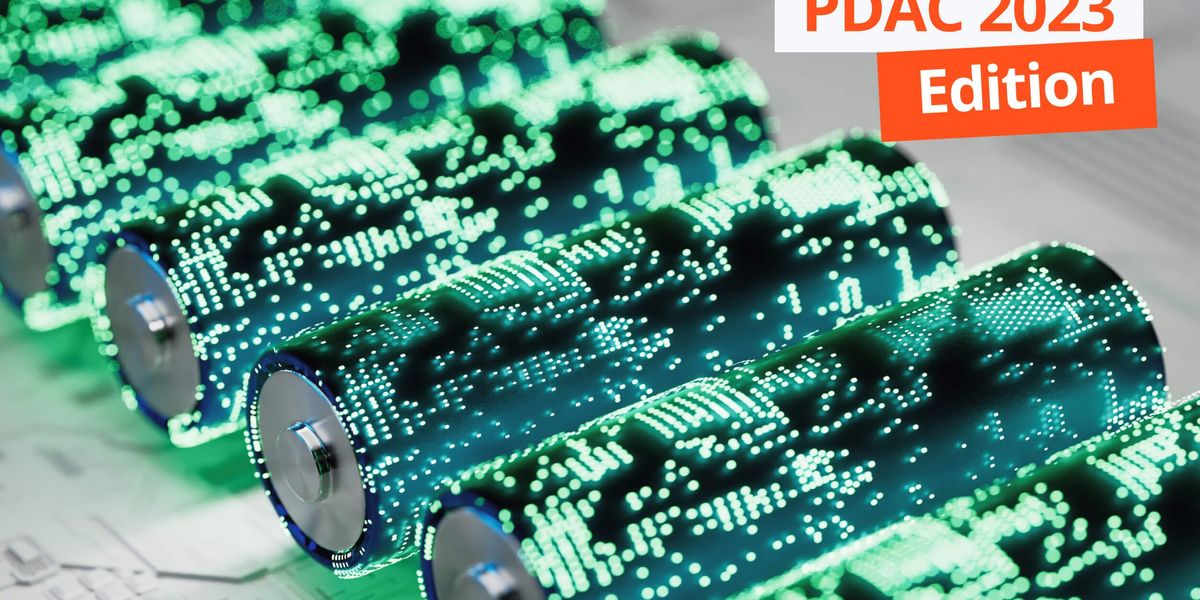Geopolitical dynamics in the battery metals space have taken center stage in the past year as governments around the world continue to pursue green policies and wake up to supply chain vulnerabilities.
The Inflation Reduction Act in the US, Europe’s Critical Raw Materials Act and Canada’s Critical Minerals Strategy are just some of the pieces of legislation that have been put in place in recent months to ensure secure supply of raw materials to meet growing demand from the electric vehicle (EV) space, and ultimately reach ambitious net-zero targets.
Building out North America’s lithium-ion battery supply chain is going to require batteries to be built in the region, Andrew Miller, chief operating officer at Benchmark Mineral Intelligence, said during a keynote presentation at this year’s Prospectors & Developers Association of Canada (PDAC) convention, held in Toronto from March 5 to 8.
“But beyond that, we’re looking at a huge number of critical inputs into those batteries, which are also going to have to expand, which are a lot less flexible in terms of their ability to address new demand,” Miller said.
The most challenging part of the supply chain is mining, as developing new projects can take anywhere from five to 25 years, or even more. “But particularly in the case of critical minerals for the EV economy, what those materials are being asked to do is not just to be extracted and shipped to market,” Miller said. They must also be refined into specialist battery-grade chemical products.
When it comes to lithium, there’s still a significant deficit even though expansions are in the works and there are huge commitments for production in North America. In fact, according to Benchmark Mineral Intelligence data, last year only about 10 percent of the region’s EVs could have been built using the lithium produced in North America.
“If you fast forward to 2030, what you see is that even though that deficit is being shortened, you’re still only seeing around three-quarters of the region’s EV demand met domestically, in the best-case scenario,” Miller said.
Benchmark Mineral Intelligence says that at least 384 new graphite, lithium, nickel and cobalt mines are needed by 2035 to meet the increasing demand for raw materials globally. For lithium, that number is a whopping 74 new mines with an average annual output of 45,000 metric tons of lithium carbonate equivalent.
“North America still has a long way to go in terms of the buildout of the supply chain. We know the demand story, but what we don’t know is how capable the midstream to upstream parts of the supply chain are to react to that demand,” Miller told the audience at the convention. “Feasibly, we’re still going to have to rely on international collaboration and material coming from other parts of the world to sustain North America’s clean energy ambitions.”
For Jeffrey Christian of CPM Group, parts of the energy transition will be delayed and unpredictable.
“The lack of minerals, metals, motors, controllers and other componentry, and the capital and time to build supplies, is one of the obstacles to scaling up electrification, with the uncertainty over which technologies will be used compounding capital hesitancy,” he said during his own presentation at PDAC.
Don’t forget to follow us @INN_Resource for real-time updates!
Securities Disclosure: I, Priscila Barrera, hold no direct investment interest in any company mentioned in this article.
Image and article originally from investingnews.com. Read the original article here.

